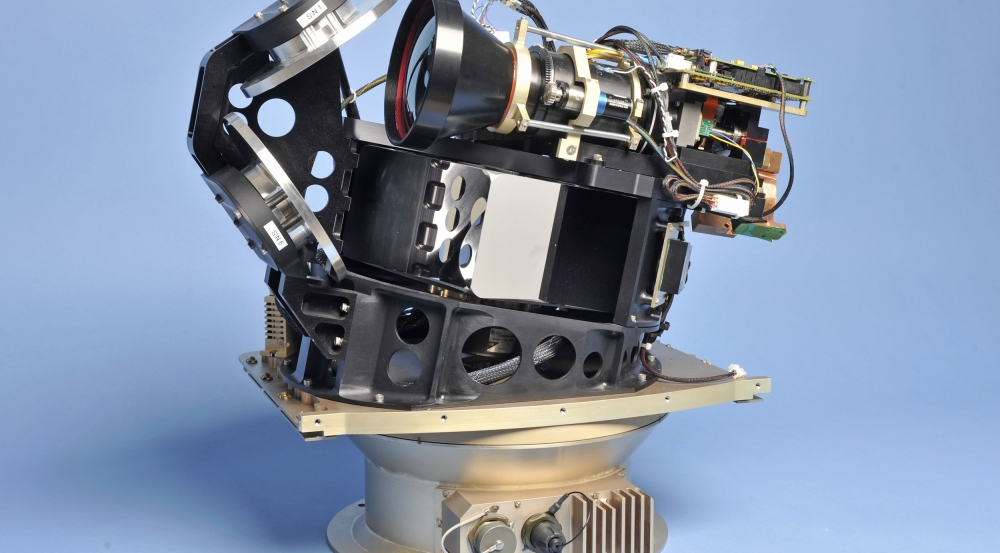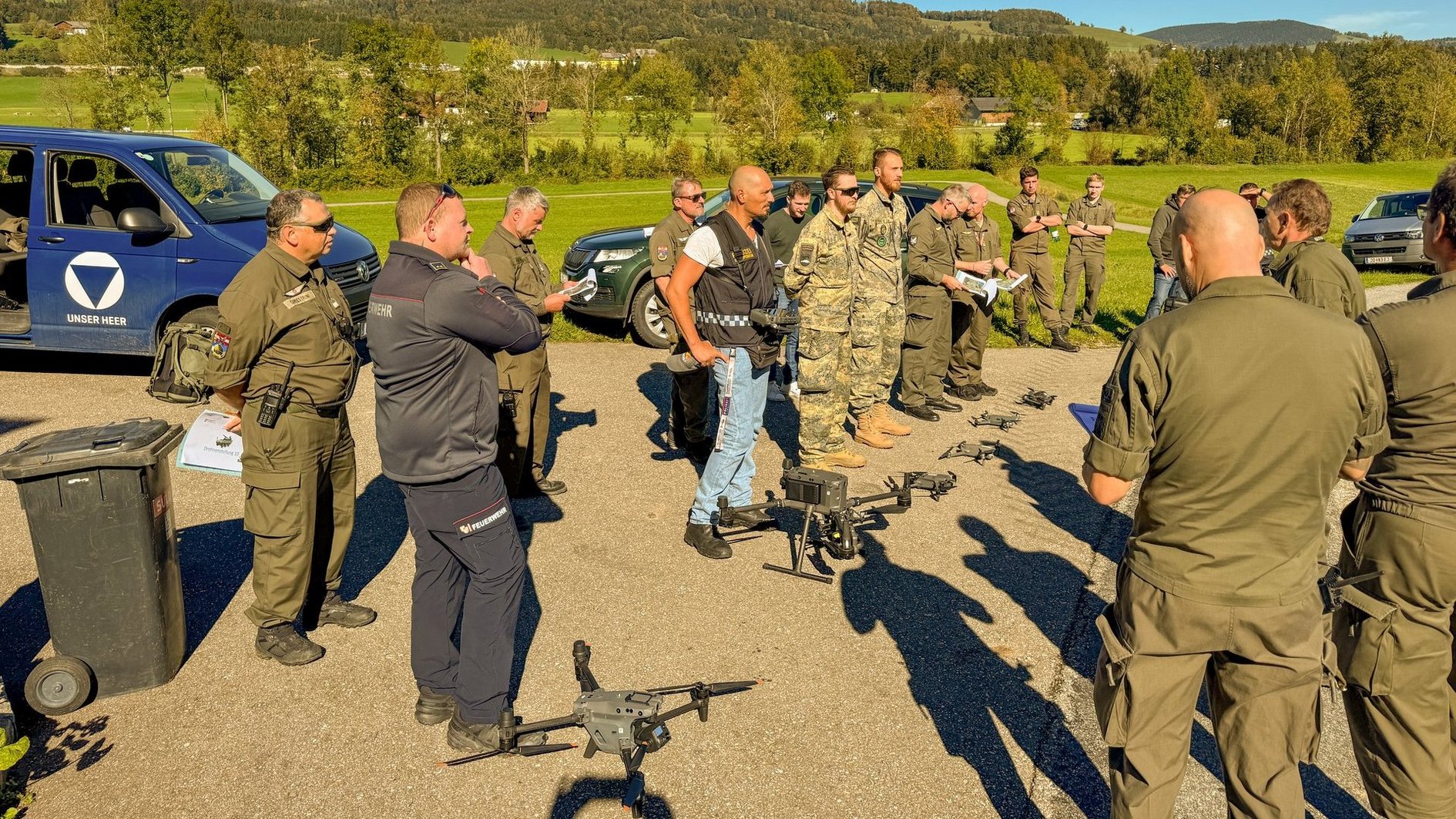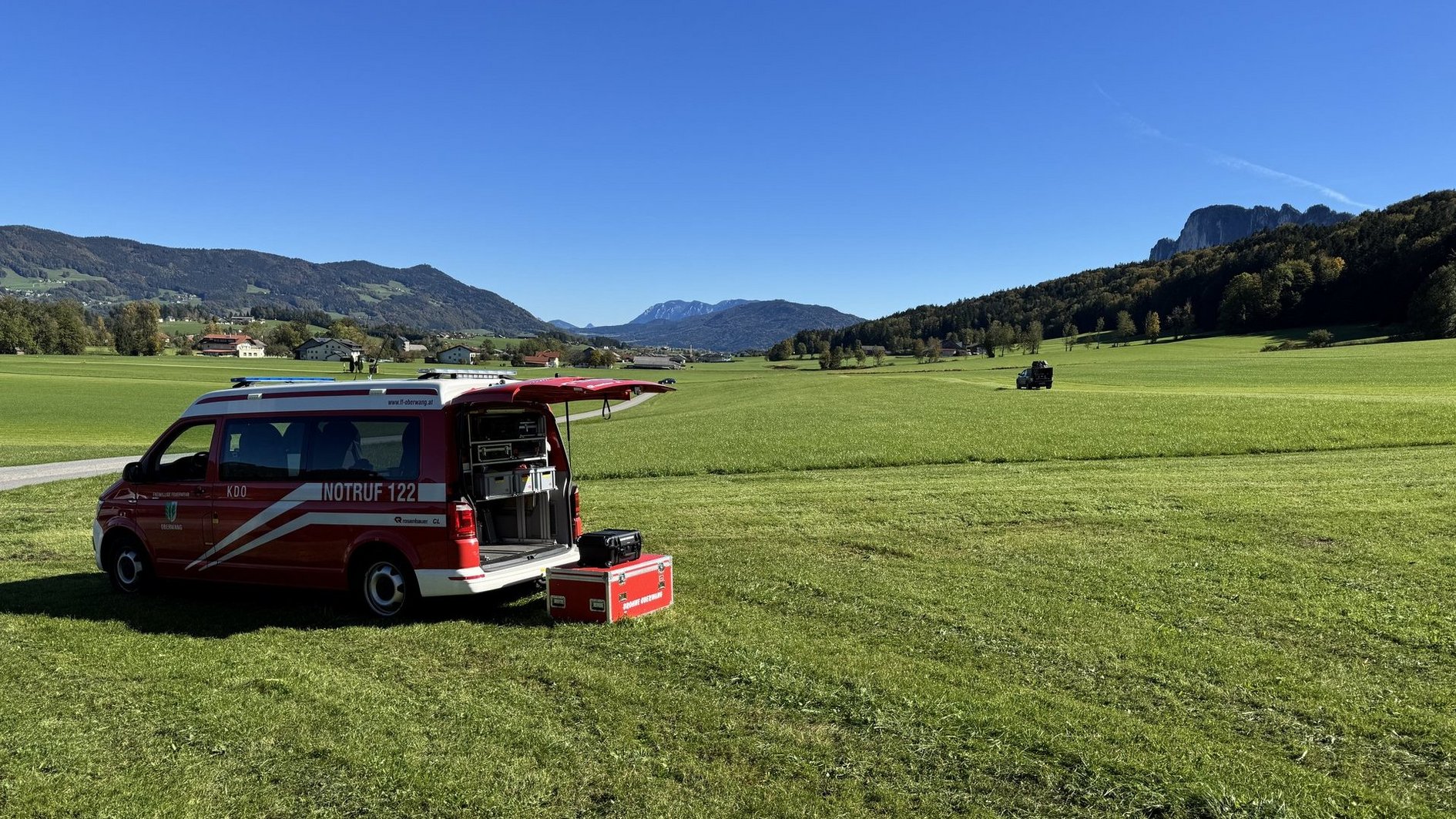Re: Entwicklungen Fliegerabwehr
Verfasst: Sa 5. Okt 2024, 16:20
Das weiß ich, aber das war auch nicht meine Frage.
Forum für Österreichs Militärgeschichte
https://www.doppeladler.com/da/forum/
Ach so, Sie meinen dieses System:
Hersteller ist Anduril Industries, ursprünglich stammt der Sensor aber von Copious Imaging:Rheinmetall Lösungen zur Drohnenabwehr, in: Militär Aktuell, H 3/24, p. 50-51 hat geschrieben:Radar und passive RF (Radio-Frequency)-Erkennung sind zwar wertvoll, aber beim Einsatz von Radar besteht die Gefahr, die Position des Benutzers zu verraten, und beide können für elektronische Kriegsführung anfällig sein. Mit dem passiven WISP IR (Infrarot)-Sensor wird eine zusätzliche Ebene der Langstreckenerkennung hinzugefügt, und eine hochpräzise Verfolgung, die verschiedenen Effektoren zugewiesen werden kann. Im Gegensatz zu anderen Sensoren sendet der WISP-IR-Sensor keine Strahlung aus, was ihn immun gegen die Erkennung und Störung durch EW-Systeme macht. Darüber hinaus hat dieser Sensor den Vorteil, dass er in der Lage ist, autonome/einbahnige Angriffsdrohnen zu erkennen.
https://ui.adsabs.harvard.edu/abs/2020S ... K/abstractCopious Imaging is commercializing a digital-readout integrated circuit (DROIC) technology that not only digitizes, but also performs computations on the signal at each pixel. When the DROIC is mated to a photodiode detector array, the device forms a Computational Pixel Imager (CPI). The technology was in development for many years at MIT Lincoln Laboratory, and now also at Copious Imaging for new application areas. CPI technology is fundamental to the operation of WISP - the Wide-Area Infrared System with Persistence. WISP is a 500-Mpix longwave infrared (LWIR) motion imaging sensor that produces imagery covering the complete surroundings, more than 2π steradians, every 2 seconds. WISP utilizes a fast scanner to cover the scene quickly. The WISP sensor is coupled with a real-time processing system that stiches the scene together from scanned swaths, performs a non-uniformity compensation, stabilizes the imagery to sub-pixel accuracy, detects motion, and tracks all moving objects of interest. The system has machine learning built-in to aid in identifying objects of interest while ignoring clutter. WISP is in use for many applications and in development for several more. We are currently evaluating WISP for use in screening for fevers.
Anduril’s WISP (Wide-Area Infrared System for Persistent Surveillance) is a fully passive, AI-enabled, 360-degree wide-area high quality imaging system that enables persistent automated threat detection and situational awareness. The WISP is built on a unique transformative IR imager design that combines real-time AI and a compact hardware frame to support multiple defense missions.
WISP is intended to be deployed in the field and can be used for a wide range of tasks, such as detection and identification of individuals, vehicles, or (unmanned) aircraft. WISP reduces response times and provides you with 24/7 long-range passive surveillance of areas that could previously only be monitored periodically. It improves the coverage of critical areas and blind spots and because the WISP emits no signal, it can detect without being detected which is very suitable in high-risk environments.
The WISP is equipped with a variety of sensors and antennas, including a high-gain directional antenna for long-range communication interception and a GPS receiver for location tracking. It also includes a powerful computing platform capable of running advanced signal processing algorithms, and it can be programmed with custom software to suit specific mission requirements. The WISP system can be configured to operate on multiple platforms and domains to including fixed towers, tactical vehicles, maritime assets, or simply on a tripod fixed to a structure.
https://cobbsindustries.com/wide-area-i ... veillance/The WISP is designed to be easily deployable by a single operator, and it can be set up quickly and discreetly in the field. It can be used in a variety of environments, including urban and rural areas, and it is resistant to jamming and interference.
At the heart of the system lies Lattice, Anduril’s real-time battlefield management system. Lattice uses technologies like sensor fusion, computer vision, edge computing, and machine learning and artificial intelligence to detect, track, and classify every object of interest in an operator’s vicinity.
Technical Specifications
Automated Detection Range
Dismount: up to 5 km
Vehicles: up to 15 km
Group 1 UAS: 5 km
Group 2 UAS: 13 km
Group 3,4 and 5 UAS: 20+ km
Commercial Aircraft: up to 150 km
Sensor Field of View
360 degree Horizontal
125 degree Vertical
Form Factor
Sensor: 15 x 15 x 22 inches
Processor 19 x 8 x 26 inches
Altitude Limits
12,000 ft / 3650 m DA

https://www.ll.mit.edu/news/lincoln-lab ... 100-awardsThe Wide-Area Infrared System for Persistent Surveillance was named one of the R&D 100 Award winners. This interior view of the system shows its lens and the folding mirrors.
https://www.rheinmetall.com/de/media/ne ... ichnen-mouDiese C-sUAS-Systeme werden das Führungssystem Skymaster sowie Hochleistungsgeschütze von Rheinmetall mit der KI-Softwareplattform Lattice und offenen, modularen und skalierbaren Hardware-Komponenten wie dem Andurils Sentry Tower, den Wisp-Sensoren und Anvil, der autonomen Abfangdrohne, kombinieren.


theoderich hat geschrieben: ↑Fr 7. Jun 2024, 01:03 Military Air Surveillance and Acquisition Radar Systems - Teilsystem Short Range Radar (SRR) verlegbar und mobil





https://vb.ooelfv.at/aktuelles/news/bei ... -radartestLetzte Woche war die Feuerwehrdrohnengruppe des Abschnitts Mondsee gemeinsam mit Drohnen von der Polizei und des Bundesheeres im außergewöhnlichen Flugeinsatz. Das Bundesheer wurde beim Test des Radarsystems „Skyranger“ unterstützt.
Bei diesem Test war ein Hubschrauber OH 58 und Drohnen verschiedener Größen (DJI M300T, DJI M30T, DJI M3 usw.) im Einsatz. Das innovative Radarsystem der Firma Hensoldt wurde im stationären Betrieb und in Bewegung getestet.
Klingt mehr nach MRAD (Iris-T SLM) vs LRAD (Aster SAMP-T) als SHORAD vs MRAD?
Erstens:capitan hat geschrieben: ↑Mo 28. Okt 2024, 07:06 - 35mm, Skyranger, Mistral ist VSHORAD, dient vor allem zur Bekämpfung von UAS und Slow Mover - ist schon alles beauftragt.
IRIS - T SLS ist SHORAD,
IRIS - T SLM ist MRAD,
beide werden im Rahmen der ESSI angeboten und unser engster Kooperationspartner wird diese Systeme auch nutzen und es gibt keine Sprach- und Kulturbarrieren vom Hersteller her. Ein Radar kann beide Werfertypen mit Daten versorgen.
ASTER 15 ist SHORAD mit hinein in MRAD,
ASTER 30 ist MRAD mit hinein in LRAD,
SAMP/T Werfer können mit beiden Typen mischbestückt werden, was einen massiven taktischen Vorteil bringt - mehrschichtfähig mit einem Werfer. Wird von ESSI nicht angeboten, deshalb ist Frankreich und Italien auch nicht dabei. Nicht zu unterschätzende Sprach- und Kulturbarrieren vom Hersteller her.
Eine Entscheidung wird noch heuer forciert, um dieses Thema - welches massiv unnötig Ressourcen mit leeren Kilometer bindet - vom Tisch zu bekommen.